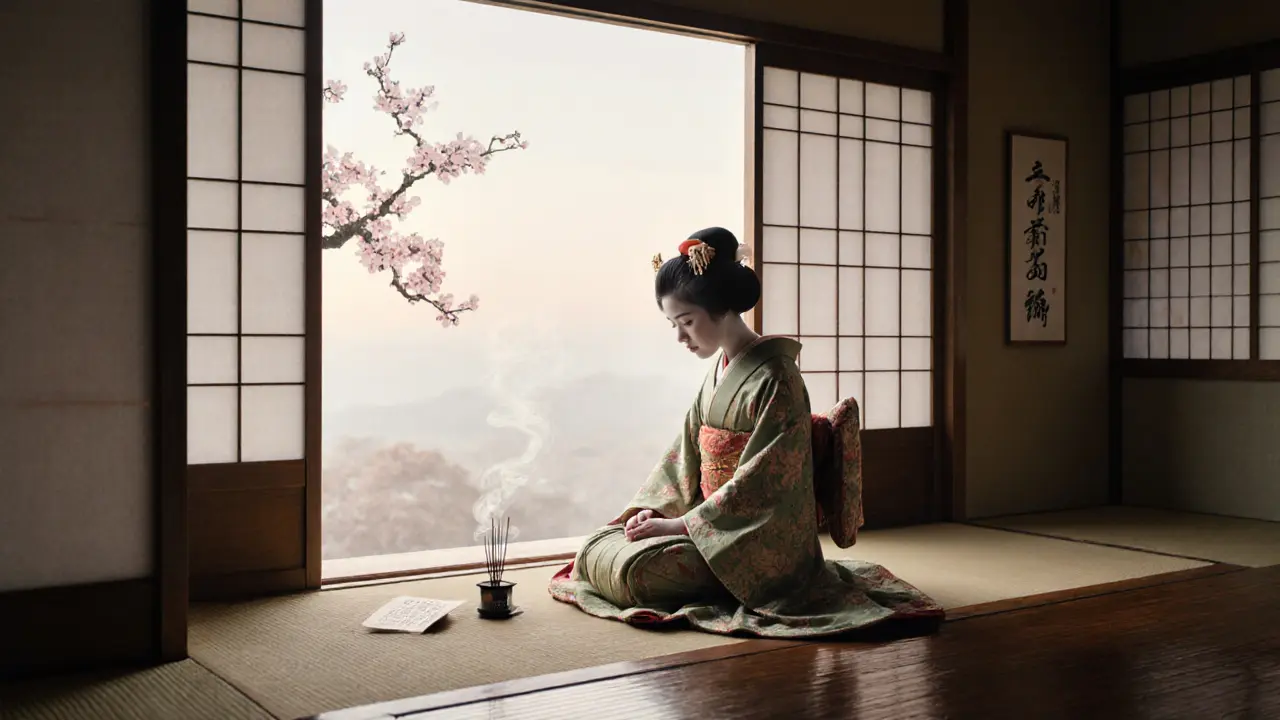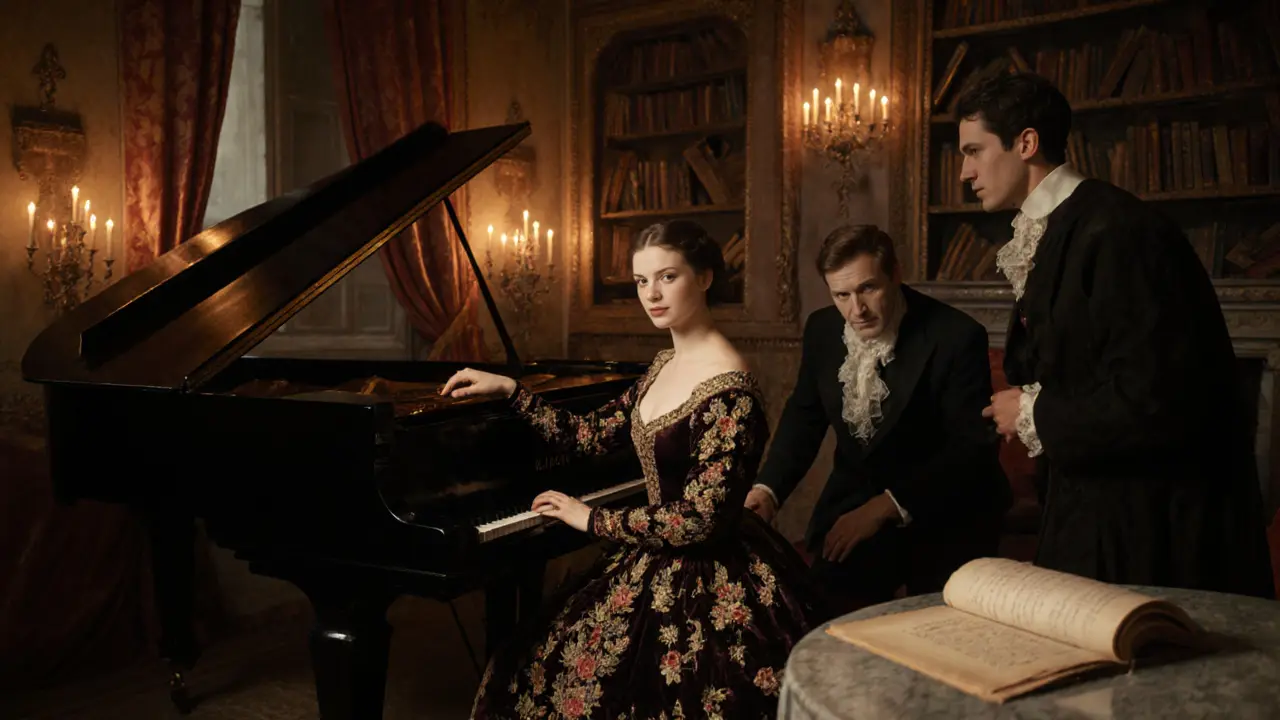Think of seduction as just flirting or physical attraction? That’s a modern misunderstanding. Centuries ago, the most powerful seducers weren’t just beautiful or wealthy-they were strategists, linguists, and psychologists who turned desire into influence. Courtesans in Renaissance Italy, 18th-century France, and Edo-era Japan didn’t rely on beauty alone. They mastered the art of making someone feel understood, seen, and irreplaceable. Their power wasn’t in what they did, but in how they made others feel when they were around.
What Made a Courtesan Different from a Prostitute
| Aspect | Courtesan | Prostitute |
|---|---|---|
| Primary Income Source | Gifts, patronage, long-term relationships | Direct payment for sex |
| Social Access | Salons, courts, intellectual circles | Brothels, streets, hidden encounters |
| Education | Music, poetry, philosophy, languages | Minimal formal training |
| Longevity of Influence | Decades; some advised kings and generals | Short-term transactions |
| Legacy | Historical records, letters, art | Most erased from history |
The word "courtesan" comes from the Italian "cortigiana," meaning one who frequents the court. These women weren’t hired for a night-they were invited into homes, salons, and even political councils. Tullia d’Aragona, a 16th-century Venetian courtesan, published philosophical dialogues on love. Veronica Franco, another Venetian, corresponded with nobles and poets, using her wit to defend herself against accusations of immorality. Their power came from intellect, not just allure.
The Tools of the Trade: Beyond Physical Beauty
Courtesans trained like artists. They studied dance to move with grace, learned to play lute and harpsichord to create intimate atmospheres, and memorized poetry to quote at just the right moment. But the real skill was in listening. A courtesan didn’t talk to impress-she listened to understand. She noticed what made a man pause, what made his voice soften, what topic he returned to again and again.
In 18th-century Paris, Madame de Pompadour didn’t seduce Louis XV with her body-she seduced him with her mind. She commissioned art, advised on state policy, and curated his cultural life. She made him feel like a patron of the arts, not just a king. Her influence lasted over twenty years. That’s not seduction by chance-it’s seduction by design.
Japanese oiran of the Edo period were trained for years in calligraphy, tea ceremony, and the subtle art of silence. They knew when to speak and when to let a silence linger. A well-timed pause could make a man wonder what she was thinking, and that uncertainty became intoxicating.
The Psychology of Desire: How They Controlled Attention
Courtesans understood something most people still don’t: desire thrives on scarcity. They never gave everything at once. A letter might arrive at midnight, left anonymously. A song might be played once, then never again. A conversation might end just as it deepened, leaving the man wanting more.
This wasn’t manipulation-it was emotional pacing. They created rhythm. Too much attention, and it became ordinary. Too little, and it felt cruel. The balance was everything. They made men feel chosen, not bought.
One documented case from 17th-century Florence shows a courtesan refusing to meet a wealthy merchant for three weeks after he sent her a diamond necklace. When she finally agreed to see him, she wore the necklace-but only after he had written her three poems. The necklace wasn’t the price. The poems were.

How They Built Real Power
Courtesans didn’t just charm men-they built networks. They connected artists to patrons, scholars to politicians, diplomats to spies. In Venice, courtesans were the only women allowed to attend literary salons. They hosted debates on politics, religion, and philosophy. Their homes became centers of influence.
Some even owned property. Tullia d’Aragona inherited a house in Rome and lived independently until her death. Veronica Franco used her earnings to fund charities and protect other women. Their wealth wasn’t a byproduct of seduction-it was the goal.
They didn’t need to marry to be secure. They didn’t need a man’s name to be respected. Their reputation was their currency. And reputation, unlike beauty, lasts.
What Modern Seduction Gets Wrong
Today, seduction is often reduced to pickup lines, dating app profiles, and Instagram aesthetics. We think if we look good enough, say the right thing, or send the perfect emoji, we’ll win someone over. But real influence doesn’t come from performance-it comes from presence.
Courtesans didn’t try to be someone else. They were deeply themselves: curious, sharp, emotionally aware. They didn’t chase attention-they attracted it by being fully alive in the moment. A man didn’t fall for a curated image. He fell for the way she made him feel when he was with her.
Modern dating apps reward speed. Courtesans mastered slowness. They knew that the most lasting connections aren’t built in a week-they’re built over months, through small, intentional moments: a shared silence, a book recommended, a question asked that no one else had thought to ask.

Lessons from the Courtesans: How to Apply Their Art Today
You don’t need to be a noblewoman in 1600 to use their methods. The tools are timeless:
- Listen more than you speak. Notice what people don’t say. The things they avoid, the topics they return to-that’s where real connection begins.
- Be mysterious, not distant. Don’t give everything at once. Leave space for curiosity. A half-told story, a favorite song you never play twice-these create longing.
- Cultivate depth, not just charm. Learn something outside your field. Read poetry. Study music. Understand history. Depth attracts attention better than any filter.
- Use silence as a tool. Don’t rush to fill quiet moments. Let them breathe. Often, the most powerful thing you say is what you don’t say.
- Build reputation, not followers. People remember how you made them feel. Not how many likes you got.
The courtesans weren’t trying to "get" someone. They were trying to create a space where someone wanted to stay. That’s the difference between seduction as a tactic-and seduction as a way of being.
Why Their Legacy Still Matters
These women lived in societies that denied them legal rights, property ownership, and political voice. Yet they carved out spaces of autonomy, influence, and respect. They turned vulnerability into strength. They made desire a currency they controlled.
Today, we still chase the same thing: to be desired, to be chosen, to matter. But we often do it the wrong way-by performing, by posting, by trying to be perfect. The courtesans knew perfection was boring. What mattered was authenticity, intelligence, and the quiet confidence of someone who knew their own worth.
Their art wasn’t about control. It was about resonance. And that’s something no algorithm, no app, no trend can replicate.
Were courtesans considered respectable in their time?
Yes, in certain circles. While the Church and lower classes often condemned them, courtesans in cities like Venice, Paris, and Florence were welcomed into elite salons, intellectual gatherings, and even royal courts. Some became patrons of the arts, hosted philosophers, and were treated as equals by nobility. Their respect came from their intellect, not their status.
Did courtesans ever marry?
Sometimes, but rarely for financial security. A few courtesans married their patrons after years of relationship, especially if they had children together. Others refused marriage entirely to keep their independence. For many, marriage would have meant losing control over their income, property, and social freedom.
How did courtesans earn money?
They received gifts-jewelry, land, fine clothing, annuities-rather than direct payment. Wealthy patrons funded their homes, paid for their education, and supported their artistic pursuits. Some invested in property or businesses. Their income was often more stable and substantial than that of married women of the same class.
Were courtesans only women?
Most were women, but male courtesans existed too, especially in ancient Rome and Edo Japan. Known as "cinaedi" or "wakashu," they served similar roles-offering companionship, artistry, and emotional intimacy to elite men. Their stories are less documented, but their presence was real.
Can the courtesan’s art be learned today?
Yes-but not as a trick or technique. It’s about cultivating presence: listening deeply, speaking with intention, embracing mystery, and valuing authenticity over performance. It’s not about seducing someone. It’s about becoming someone worth being close to.
If you want to be unforgettable, stop trying to be perfect. Start being real. Listen more. Speak less. Let silence hold weight. That’s the oldest, and still the most powerful, seduction there is.







